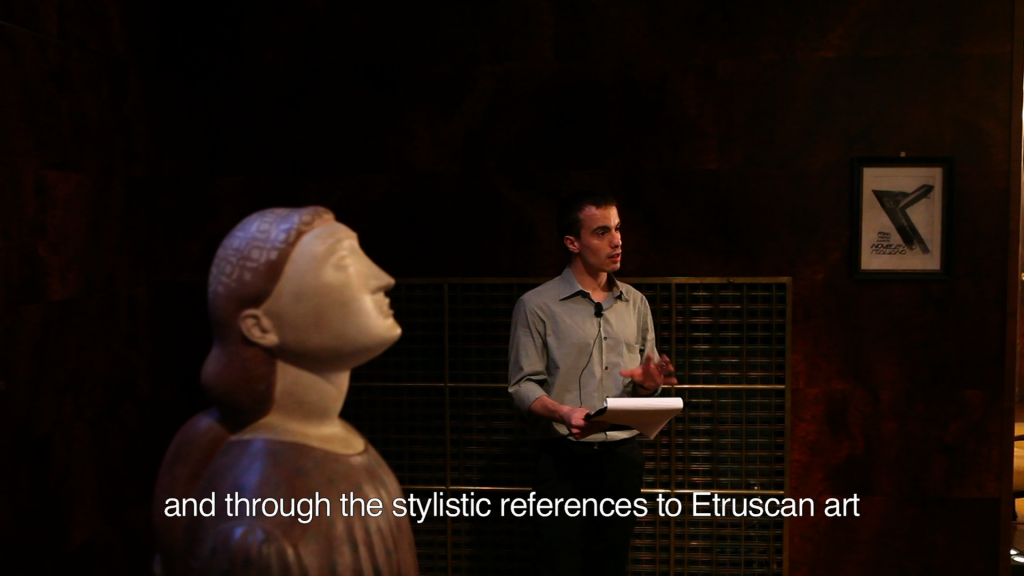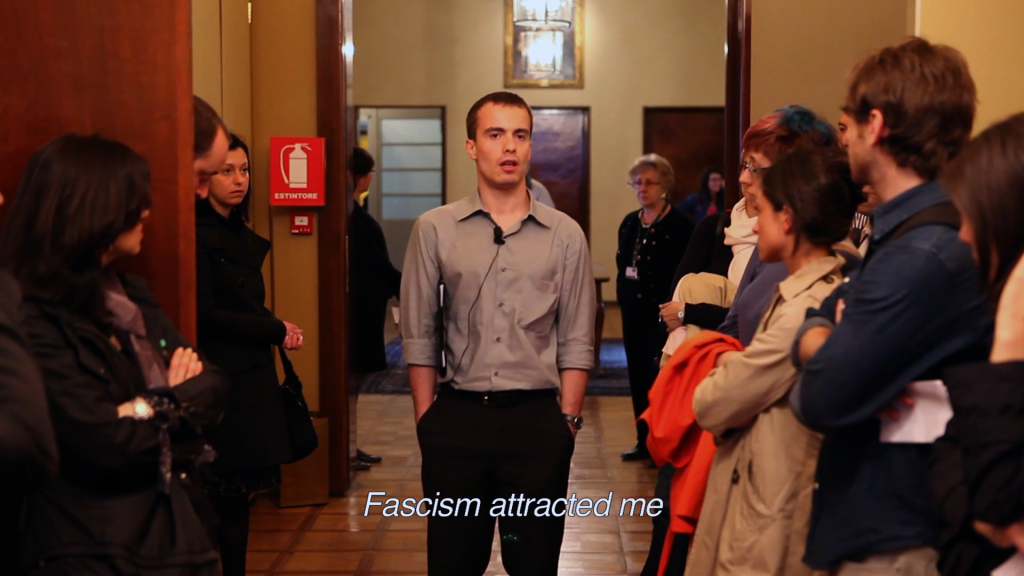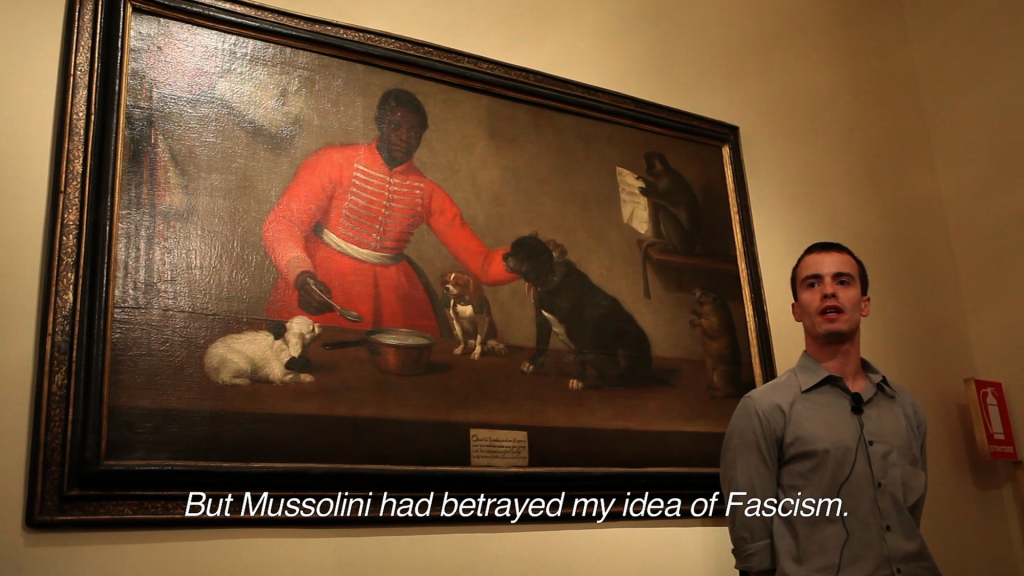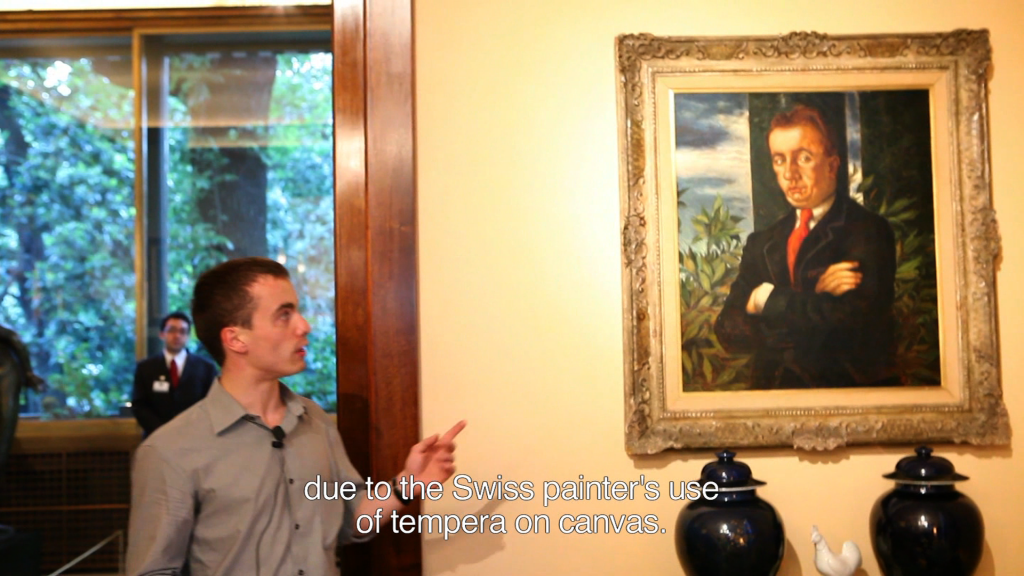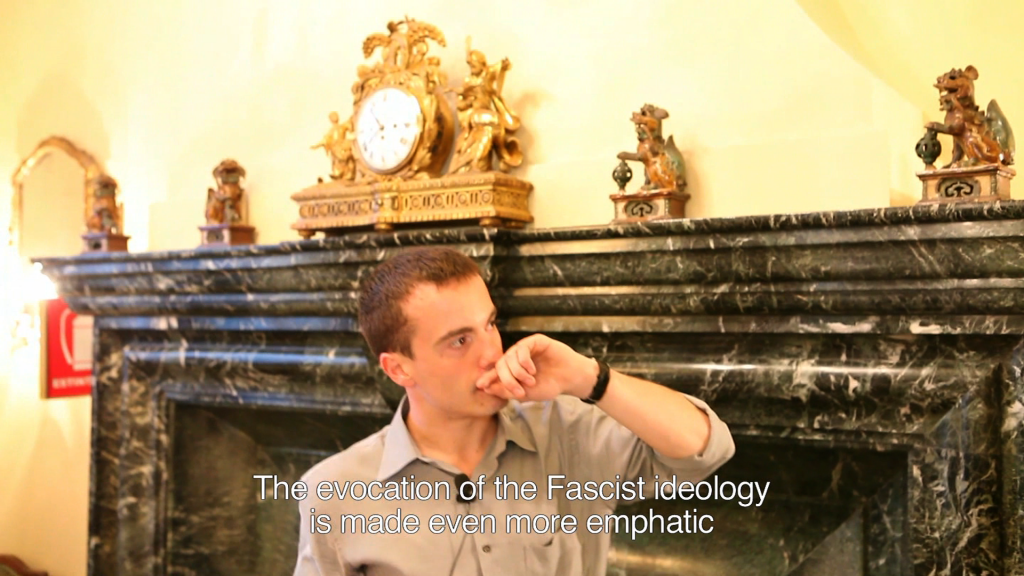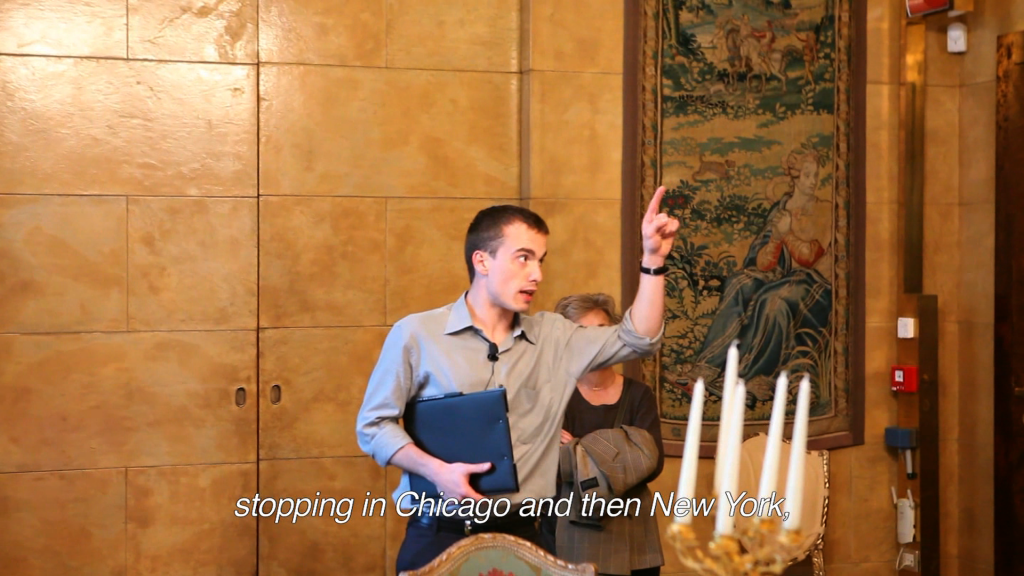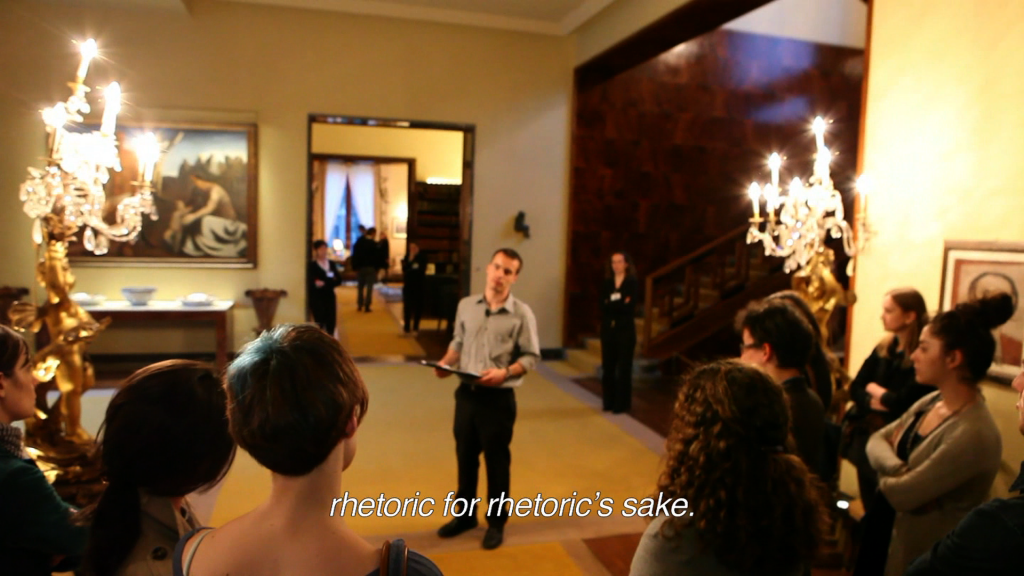“Di Massimo’s recent performance work, Fuga dal Disordine [Flight from Disorder] (2010), is a play on rhetoric in the form of a scripted guided tour of the Villa Necchi Campiglio in Milan. Following precise direction from Di Massimo, an actor speaks, in the first person, in the voices of two key figures; Margherita Scarfatti and Italo Balbo, whose stories connect the Villa with the Italian Novecento movement and early Fascist ideology. The narratives invite connections between Scarfatti’s flight from Rome following Mussolini’s alliance with Nazi policy, and Balbo’s relationship with the dictator whilst he was Governor General of Libya. Their accounts are interwoven with the third voice of a ‘call to order’ from the artists of the Novecento, whose aim of reclaiming a position for Italian artistic practice in opposition to the European avant garde had also been diverted by the war.p
Unknown to Di Massimo the performance was filmed by Vogue, and upon receiving the footage he incorporated the roaming eye of the camera into the video piece, Fuga dal Disordine (Vogue Ed.) [Flight from Disorder (Vogue Ed.)] (2010/2011). Here the viewer joins the tour guided by both the actor and Vogue’s raw footage, which pulls in and out of focus and at times leaves us in darkness. The curious interests of the camera both distract from and reinforce the narrative, while allowing an exploration of the artifacts and interiors of the Villa which had been designed Piero Portaluppi, and updated in the 1950s by Tomaso Buzzi – two architects with unusual and opposing styles. Just as the Villa hovers between ancient and modern aesthetics, so to does the viewer move between temporalities, and ornate and sparse visions.”
Elizabeth Stanton
